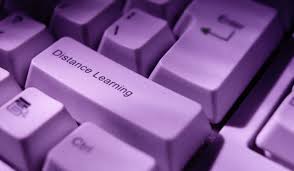
Philippine Education System consists of formal and non-formal education. Formal education is a sequential development of academic schooling at three levels; elementary, secondary and tertiary or higher education whereas Non-Formal Education or Alternative Learning system is an organized learning activity intended at accomplishing a set of objectives outside the established formal system planned for a particular clientele, like the out of school youth or adult illiterates and even the worker here and abroad who were not able to finish their college education and cannot avail themselves of the formal education. Under the Non-Formal Education Program of the country is the Expanded Tertiary Education Equivalency and Accreditation Program (ETEEAP).
What is ETEEAP?
The Expanded Tertiary Education Equivalency and Accreditation Program (ETEEAP), being implemented pursuant to Executive Order 330 of 1996, is an educational assessment scheme which recognizes knowledge, skills and prior learning obtained by individuals from non-formal and informal education experiences.
It makes use of equivalency competence standards and a comprehensive assessment system involving written test, interview, skills, demonstration, and other creative assessment methodologies. A Panel of assessors is constituted to determine the candidate’s knowledge, skills, and attitudes relevant to a particular discipline, and consequently equivalent credits and appropriate degrees are conferred by University.
It is an alternative education program in the Philippines that allows working professionals here and abroad who were not able to finish their college education or were completely unable to step into college to earn a bachelor’s degree without going through traditional schooling methods.
Legitimacy of the Program
ETEEAP operates by virtue of EO No. 330 signed by former President Fidel V. Ramos on May 10, 1996. It is currently administered by the Commission on Higher Education (CHED) and Colleges or Universities that wish to offer it as part of their academic programs must gain CHED’s approval first.
Objectives of ETEEAP
ETEEAP as defined by the Commission on Higher Education (CHED)aims to achieve the following objectives: (1) to develop fully the system of equivalency and accreditation in higher education as a bridging mechanism for the flexible entry and exchange among the formal, non-formal and informal systems, (2) expand and strengthen the system of academic equivalency and validation of knowledge and expertise derived by individuals from relevant work experiences and high level non-formal training in order to harness their full potentials, and (3) provide individuals with proven competence, access to opportunities that will prepare them for higher value jobs required for achieving global competitiveness, advancing strategic concerns of the state and of the global community, and in promoting sustainable development.

ETEEAP Assessment Procedure
The assessment procedure for ETEEAP should consist of the following:
1. The candidate secures and accomplishes the application form from Higher Education Institution (HEI) or CHED thru CHED website (www.ched.gov.ph), and submits it along with the supporting evidences certified by employers and recognized authorities and organizations that establish his/her qualifications,
2. The HEI pre-assesses applicant’s qualifications through documents submitted, interview, and/or written exam. Evaluation of the candidate’s professional experiences rests on the HEI implementing the program. Along with those frequently in use are years of work experience, job responsibility, job position, seminars and trainings attended, projects undertaken and other achievements received throughout the applicant’s employment. Certain weighting factors will be used to earn a certain number of units upon application.
3. If the candidate qualifies, he/she will proceed to undertake assessment in the deputized HEI. This may include written test, oral exams, laboratory demonstration, interview, and worksite visitation. The panel of experts assesses and determines extent and level of candidates’ competencies,
4. A candidate assessed to be lacking in one or more competency units will be required to pursue further learning. A learning contract that defines the learning program is executed between HEI and the candidate. Further, assessment is conducted after the completion of the learning program to determine the progress of the candidate toward meeting the learning outcomes and standards specified in the said program; and
7. After fulfilling the learning outcomes and correct assessment criteria for the course, and having complied with the requirements prescribed by CHED and the institution for the completion of the course, the candidate is awarded the appropriate equivalency credit and/or degree title.
Qualifications of Candidate
An ETEEAP candidate must be a Filipino, at least 25 years old, at least high school graduate or must have PEPT equivalent to first year college. He/She should have at least five (5) years of work-related experiences. Able to show evidence of capability and thorough knowledge through the following evidences (any of the following): (a) Certificate of Proficiency issued by a government regulatory board, (b) Certificate of Proficiency issued by the employer, (c) Certificate of Proficiency issued by a licensed practitioner in the field, and/or (d) Business registration certificate.
ETEEAP Curriculum
ETEEAP follows the HEI program curriculum. ETEEAP classes can be conducted through traditional classroom setup or in a way of distance learning. Lessons are very fast-paced and straightforward. The subjects use module-based which is highly compressed and could finish in about a year. A contact session, usually done on Saturday or Sunday, depend on the school policy and a work visit maybe required by the HEI in order to learn more about the student. Unlike in traditional schooling, projects are done individually. As for students who are in a distance learning system, classes are done via e-mail exchanges, video call thru Skype and instant messaging. Individual projects are submitted through messenger.
Personal Insight
There are several working professionals who are well-experienced and yet deprived of being promoted because they were not able to comply the educational requirement provided by their organization. With ETEEAP, those professionals will have a chance to move in a higher position and may pursue in seeking a better employment.
Question for Discussion:
Do you think it should be offered as one of the organizations’ benefit to their workers who haven’t finished their college? Why or Why not?
About the Author:
Suzette Masangcay-Mercado is currently taking up Master of Science in Engineering Education major in Industrial Engineering at Rizal Technological University, Mandaluyong City. She is presently a faculty member of Batangas State University, Alangilan Campus under the College of Engineering, Architecture and Fine Arts.
LIST of NAT & UPCAT REVIEWERS (Automated E-LEARNING Format)
Tag: Distance Learning: Possible for ETEEAP







Add new comment